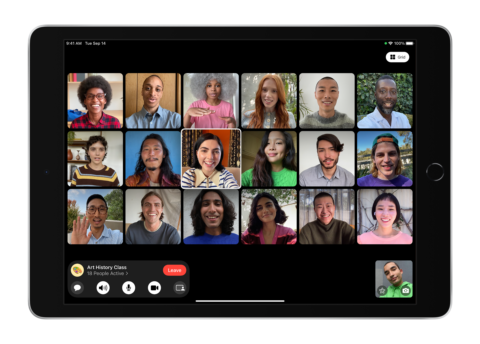The pandemic changed everything – but not quite enough regarding your Apple devices
COVID changed everything – including people’s use of technology. Video chat became far more prevalent as people sought to continue communicating with colleagues, friends and family during lockdowns – and remain in touch with people overseas they could only hope to visit in the far future.
Major industry players became increasingly aware of such shifts in technology usage. In particular, Zoom’s meteoric rise from also-ran video conferencing app to part of the fabric of modern communications didn’t go unnoticed, with rivals clamoring for a piece of the prize – and that included Apple.

Get some FaceTime
If you’ve been keeping tabs on the progress of iOS 15 and iPadOS 15, you’ll be aware a slew of FaceTime improvements are on the way. Spatial audio will detect where sound is coming from and help conversations flow more naturally. Grid view will add coherence to large group calls. Portrait mode and voice isolation will place focus on subjects rather than background noise and imagery. And, for the first time, FaceTime calls can include invited Android and Windows users – although their sessions occur via a secure connection within a browser.
All these are good features, but feel a lot like Apple playing catch-up. Arguably, the same’s true for Apple’s more ambitious SharePlay, which will soon allow you to watch movies and TV shows with friends, or to share live app screens during video chats when you want to talk over ideas. That said, Apple’s skills regarding usability and system integration will, for anyone ensconced in the ecosystem, naturally set its products above those of rivals who got there first.
Focusing on people
Apple’s response in hardware has been similarly mixed. It’s great to see the front cameras across the company’s line-up meaningfully improve in terms of resolution and computational power. On iPad, Center Stage takes things further, with the ultra-wide camera able to keep you in frame as you move. But it’s strange that the recent iMac redesign bafflingly omits the feature – and suggests a lack of joined-up thinking.

This is true with other aspects of device usage forced on us during the pandemic. Mask use remains commonplace, and yet modern iPhones remain reliant on Face ID for authorization. A workaround that allows you to unlock your iPhone using an Apple Watch isn’t much help if you don’t already own Apple’s wearable. Yet an alternative exists: Touch ID is baked into the iPad Air and iPad mini (as part of the power buttons) – and arguably should be on the iPhone 13 line as well. But it’s not.
Looking to the future
So why has Apple not been more even with key improvements that could benefit those of us living in a COVID world – and omitted others entirely? Naturally, the company isn’t going to share such information. Nonetheless, two possibilities spring to mind.
The first is the products in question were already a long way into development when COVID hit, and it was too late to make substantial changes. The second is that Apple was aware of relevant issues but it wasn’t viable – due to commercial or resourcing reasons – to adjust course.
Even with cash reserves more akin to a country than a company, Apple cannot – or will not – always respond swiftly nor be flexible, even in the midst of a pandemic. The flip side is those improvements we do get will be beneficial over the long term, well into the days when we hope COVID is but a distant memory.

